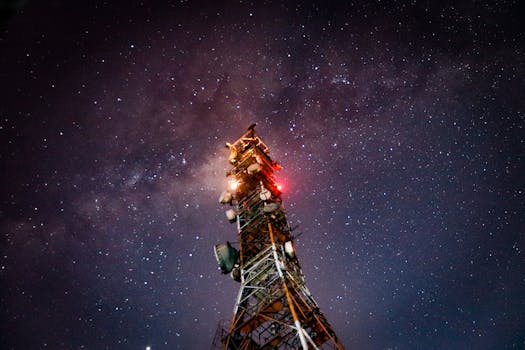
MEO Satellites: Revolutionizing Global Communication with Medium Earth Orbit Technology
MEO satellites, or Medium Earth Orbit satellites, are a type of satellite that operates in an orbit between 2,000 and 36,000 kilometers above the Earth’s surface. This orbit is higher than Low Earth Orbit (LEO) satellites but lower than Geostationary Earth Orbit (GEO) satellites. MEO satellites are gaining popularity due to their unique characteristics, which make them ideal for various applications, including global communication, navigation, and Earth observation.
The focus on MEO satellites has increased in recent years, driven by advances in technology and the growing demand for faster and more reliable communication services. MEO satellites offer several advantages over traditional GEO satellites, including lower latency, higher bandwidth, and improved connectivity. These benefits are critical for applications that require real-time communication, such as video conferencing, online gaming, and remote healthcare.
How MEO Satellites Work
MEO satellites work by transmitting and receiving signals to and from Earth stations or other satellites. They use a range of frequencies, including Ka-band, Ku-band, and C-band, to provide various communication services. The satellites are equipped with transponders, which receive the signals, amplify them, and re-transmit them back to Earth. The signals are then received by Earth stations or other satellites, which decode and process the information.
MEO satellites are typically launched into orbit using rocket launch vehicles, such as the Ariane 5 or Falcon 9. Once in orbit, they use their onboard propulsion systems to reach their final position and maintain their orbit. The satellites are designed to operate for 10 to 15 years, depending on their specific mission and design.
Applications of MEO Satellites
MEO satellites have a range of applications, including global communication, navigation, and Earth observation. They are used to provide broadband internet services, mobile connectivity, and broadcast services, such as television and radio. MEO satellites are also used for navigation, providing location information and timing signals for GPS and other satellite navigation systems.
In addition to these applications, MEO satellites are used for Earth observation, monitoring the environment, and tracking weather patterns. They provide high-resolution images of the Earth’s surface, which are used for a range of applications, including agriculture, forestry, and disaster response.
Benefits of MEO Satellites
MEO satellites offer several benefits over traditional GEO satellites, including lower latency, higher bandwidth, and improved connectivity. They are also more resistant to interference and jamming, making them more secure and reliable. MEO satellites are also more flexible, allowing for easier reconfiguration and upgrade of services.
Another benefit of MEO satellites is their ability to provide global coverage, including remote and underserved areas. They can reach areas where traditional communication infrastructure is limited or non-existent, providing critical communication services for communities and businesses.
Challenges and Future Developments
Despite the benefits of MEO satellites, there are several challenges and limitations to their adoption. One of the main challenges is the high cost of launching and operating MEO satellites, which can be prohibitively expensive for some organizations. There are also technical challenges, such as managing the complex systems and networks required to support MEO satellites.
However, as technology continues to evolve, we can expect to see significant advancements in MEO satellite technology. Next-generation MEO satellites will offer even faster and more reliable connections, with higher bandwidth and lower latency. They will also be more secure and resilient, with advanced cybersecurity measures and redundancy systems.






